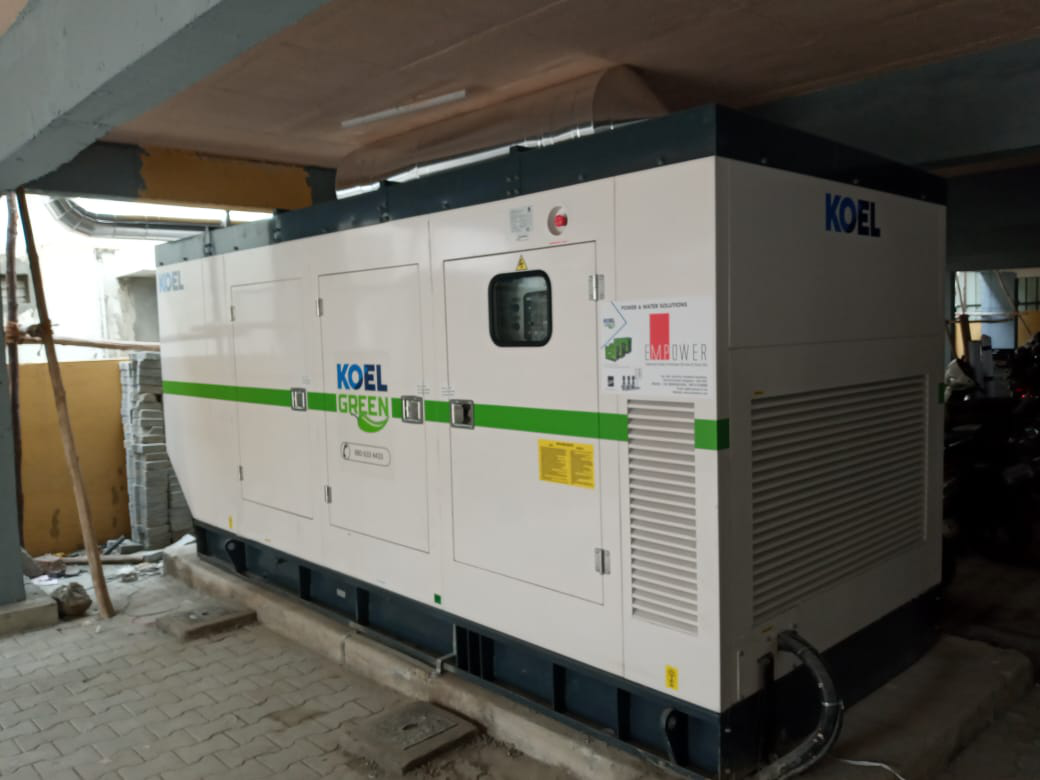The rare earth magnet market is rapidly growing, driven by the increasing demand for advanced technology, electronics, and green energy solutions. These magnets, made from rare earth elements such as neodymium, samarium, and dysprosium, play a critical role in many industrial applications, including electric motors, hard disk drives, wind turbines, and electric vehicles. As technology advances, the need for these magnets is set to grow significantly, providing lucrative opportunities for manufacturers and investors alike.
The global rare earth magnet market reached a value of nearly USD 21,992.71 million in 2024. It is projected to expand at a compound annual growth rate (CAGR) of 9.10% during the forecast period of 2025-2034, ultimately reaching a value of approximately USD 52,544.38 million by 2034. The market’s growth is primarily fueled by the rising demand for clean energy technologies, electric vehicles (EVs), and consumer electronics.
This article explores the global rare earth magnet market, providing an overview of the industry, its size and share, market dynamics, trends, growth drivers, opportunities, challenges, and competitive landscape.
Overview of the Global Rare Earth Magnet Market
Rare earth magnets are permanent magnets made from alloys containing rare earth metals. These magnets are prized for their exceptional strength and resistance to demagnetization, making them essential for a variety of applications, particularly in high-performance and energy-efficient technologies. There are two primary types of rare earth magnets: neodymium-iron-boron (NdFeB) magnets and samarium-cobalt (SmCo) magnets.
Neodymium magnets are the most commonly used rare earth magnets due to their high strength-to-weight ratio, which makes them suitable for miniaturized electronic components, electric motors, and automotive applications. Samarium-cobalt magnets, while slightly less powerful, are highly resistant to corrosion and are typically used in high-temperature environments, such as aerospace and defense sectors.
The global rare earth magnet market is driven by innovations in sectors such as automotive (specifically electric vehicles), renewable energy (especially wind turbines), and consumer electronics (smartphones, computers, and gaming devices). As countries adopt green energy initiatives and pursue decarbonization strategies, the demand for rare earth magnets is expected to continue to rise.
Size and Share of the Global Rare Earth Magnet Market
The global rare earth magnet market reached a value of approximately USD 21,992.71 million in 2024. Over the forecast period of 2025-2034, the market is expected to grow at a CAGR of 9.10%, reaching a projected value of around USD 52,544.38 million by 2034.
Regional Market Breakdown
The market is geographically diverse, with significant consumption and production taking place in Asia, Europe, and North America. China holds a dominant position in the global rare earth magnet market, being the leading producer of rare earth metals and magnets. China also controls a substantial share of the global supply chain for rare earth elements, making it a major player in the market.
In addition to China, countries such as Japan, the United States, and Germany are key consumers of rare earth magnets, driven by robust industrial sectors that rely on advanced technologies. The rise of electric vehicles and renewable energy technologies in Europe and North America is expected to drive further growth in these regions.
The Asia-Pacific region, led by China and Japan, currently holds the largest market share, with the demand for rare earth magnets mainly driven by the automotive, electronics, and energy sectors. However, other regions such as North America and Europe are expected to witness strong growth due to increasing demand for clean energy solutions and EVs.
Get a Free Sample Report with a Table of Contents:
https://www.expertmarketresearch.com/reports/rare-earth-magnet-market/requestsample
Market Dynamics & Trends
- Rising Demand for Electric Vehicles :One of the primary drivers of the global rare earth magnet market is the increasing demand for electric vehicles (EVs). EVs rely on high-performance electric motors that use rare earth magnets, particularly neodymium magnets, to achieve higher power output and energy efficiency. As governments around the world push for the adoption of EVs to reduce carbon emissions and reliance on fossil fuels, the demand for rare earth magnets will continue to rise. The growth of the EV industry is expected to significantly impact the market for rare earth magnets over the coming decade.
- Expansion of Renewable Energy Sources :Renewable energy, particularly wind energy, is another significant driver of the rare earth magnet market. Wind turbines require large quantities of rare earth magnets to produce energy-efficient systems. The global push for cleaner energy sources has led to an increase in wind energy projects worldwide, further increasing the demand for rare earth magnets. As countries set ambitious renewable energy targets to address climate change, the market for rare earth magnets used in wind turbines is expected to see sustained growth.
- Technological Advancements in Electronics :The demand for consumer electronics is another contributing factor to the growth of the rare earth magnet market. Electronics such as smartphones, hard disk drives, headphones, and gaming consoles rely on the small size and powerful performance of rare earth magnets. As the demand for high-performance, miniaturized electronics continues to rise, the need for rare earth magnets in this sector will grow.
- Increased Focus on Sustainable Mining Practices :The extraction and processing of rare earth metals have traditionally raised environmental concerns due to the environmental impact of mining practices. However, with growing awareness about sustainability, companies are increasingly focusing on environmentally friendly extraction techniques. Efforts to reduce the ecological footprint of rare earth mining and recycle rare earth magnets are expected to become important trends in the coming years. This shift towards sustainability may influence both the supply and demand dynamics of the rare earth magnet market.
Growth Drivers of the Global Rare Earth Magnet Market
Several key factors are driving the growth of the global rare earth magnet market:
- Government Policies Supporting Clean Energy: Governments around the world are implementing policies and incentives to promote the adoption of clean energy technologies, including electric vehicles and wind turbines, both of which require rare earth magnets. These initiatives will help expand the market for rare earth magnets as industries shift toward sustainable solutions.
- Technological Advancements: Continuous advancements in manufacturing technologies and material science are improving the efficiency and performance of rare earth magnets. As a result, manufacturers are developing magnets that are even stronger, more durable, and capable of operating under extreme conditions.
- Increasing Industrial Applications: The range of industrial applications for rare earth magnets is expanding. From automotive to aerospace to consumer electronics, the versatility of rare earth magnets makes them indispensable for numerous high-performance products.
- Electric Vehicle Growth: The rapid growth of the electric vehicle market is a major growth driver for rare earth magnets, as EVs require strong, energy-efficient motors and batteries that rely on these magnets.
- Renewable Energy Expansion: The global push toward renewable energy sources, especially wind power, is increasing demand for rare earth magnets used in wind turbine generators. As countries continue to transition to green energy, the market for rare earth magnets will see significant growth.
Market Opportunities and Challenges
Opportunities
- Rising Demand for Electric and Hybrid Vehicles: As the demand for electric and hybrid vehicles grows, the need for rare earth magnets will follow suit. Manufacturers can capitalize on this by investing in production and research to develop more advanced and cost-efficient magnet technologies for the automotive sector.
- Wind Power Projects: The global shift towards wind power as a renewable energy source presents a major opportunity for the rare earth magnet market. Governments and private companies investing in large-scale wind energy projects will drive the demand for rare earth magnets.
- Recycling and Sustainability: Recycling rare earth magnets and improving the sustainability of rare earth mining operations present an opportunity for market players to reduce their environmental impact and contribute to the circular economy.
- Technological Innovation: Ongoing advancements in rare earth magnet production, including improvements in material quality and cost reduction, present new opportunities for businesses to stay competitive in the market.
Challenges
- Supply Chain Vulnerabilities: The rare earth magnet market is highly dependent on the supply of rare earth metals, most of which are concentrated in a few countries like China. Geopolitical tensions, trade barriers, and supply chain disruptions can pose significant challenges to market growth.
- Environmental Impact of Mining: While rare earth magnets are vital for clean energy technologies, the mining process itself can be environmentally harmful. Companies in the industry must address these concerns by adopting more sustainable mining practices and technologies.
- High Cost of Rare Earth Magnets: Rare earth magnets are expensive to produce due to the cost of raw materials and complex manufacturing processes. The high cost can be a barrier to widespread adoption in some industries, particularly in price-sensitive sectors.
- Limited Recycling Infrastructure: Despite the growing emphasis on sustainability, the infrastructure for recycling rare earth magnets remains underdeveloped. Building effective recycling systems will be crucial to ensuring a consistent and sustainable supply of rare earth materials.
Competitive Analysis
The global rare earth magnet market is characterized by strong competition among key players involved in the production and supply of these magnets. Some of the leading companies in the global rare earth magnet market include:
- Molycorp Inc.: Molycorp is one of the leading players in the rare earth magnet market, known for producing rare earth materials and magnets for a wide range of industries, including automotive, energy, and electronics.
- Hitachi Metals Ltd.: Hitachi Metals manufactures high-performance rare earth magnets and plays a significant role in the automotive and industrial sectors. The company is known for its innovations in rare earth magnet production.
- Sumitomo Electric Industries Ltd.: A global leader in the production of rare earth magnets, Sumitomo Electric focuses on serving industries such as automotive, renewable energy, and electronics.
- Nidec Corporation: Nidec is a prominent producer of rare earth magnets, specializing in magnets for motors used in automotive applications, industrial machinery, and consumer electronics.
- Shin-Etsu Chemical Co. Ltd.: Shin-Etsu Chemical is another key player in the rare earth magnet market, with a focus on developing advanced materials for use in various high-tech applications.
Explore our trending Blogs and Reports :
Top Construction Companies
HVAC Variable Frequency Drive Market




